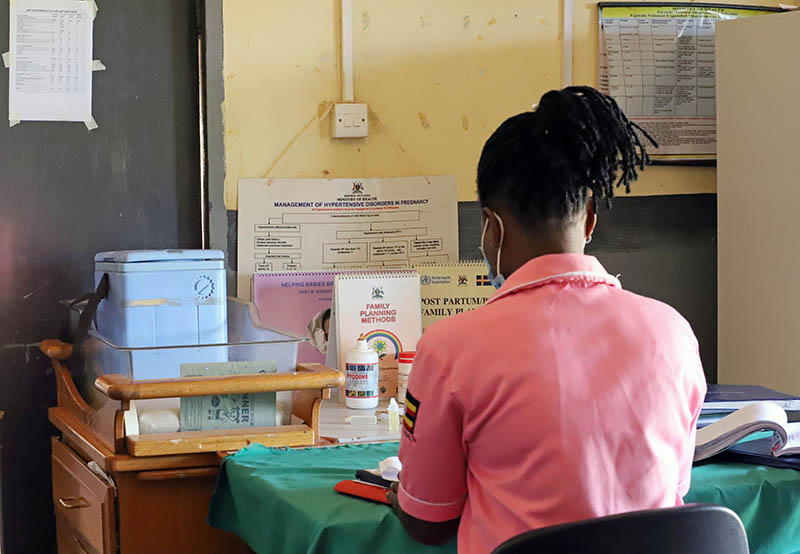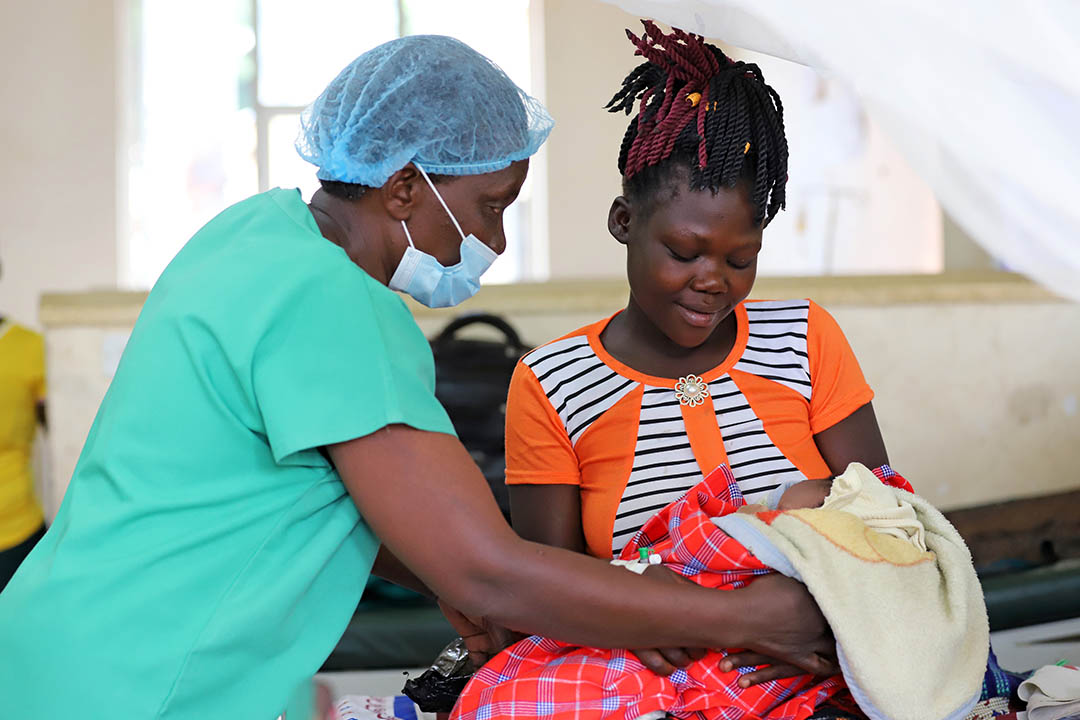Sarah Naigada, 32, could have been a tragic statistic. She had been in labor for 25 hours with her fourth child, was having difficulty pushing, and was at risk of additional tearing and bleeding after birth.
Thankfully, the staff at Bumanya Health Centre IV (HC IV) in Kaliro District, East Central Uganda, was prepared. Following a successful Cesarean section delivery, a midwife administered oxytocin to prevent postpartum hemorrhage – the number one cause of maternal mortality in low- to middle-income countries. Naigada and her healthy baby girl were discharged four days later.
Said Naigada: “I delivered at Bumanya because the midwives are competent, and they have all the medicines you need for a safe delivery.”
A key part of Naigada’s successful delivery was ensuring that oxytocin was on hand and properly cold stored all the way to the point of patient contact. Oxytocin must be kept between 2 and 6 degrees Celsius or it loses its efficacy. Not maintaining proper temperature at the point of patient contact has been a stumbling block for certain health facilities across Africa.

However, staff at Bumanya HC IV – and other high-volume maternity units in East Central Uganda – received training on an integrated quality of care approach by the USAID Regional Health Integration to Enhance Services in East Central Uganda Activity (RHITES-EC), implemented by URC, and other implementing partners. This approach – which integrated oxytocin handling in 2020 – recognizes the critical importance of quality medicines in addition to the correct clinical skills.
The training – alongside RHITES-EC’s Comprehensive Emergency Obstetric and Newborn Care (CEmONC) training and mentorship activities – and other support is delivering results. For example, the supply of oxytocin has stabilized in the East Central region in the last 12 months.
More significantly, this drug is reaching women in need. The number of women giving birth who received labor-inducing drugs in the third stage of labor or immediately after birth in East Central Region increased from 108,680 in 2016 to 146,220 in 2021, exceeding the RHITES-EC of 139,783, according to the activity’s fiscal year 2021 annual report.



